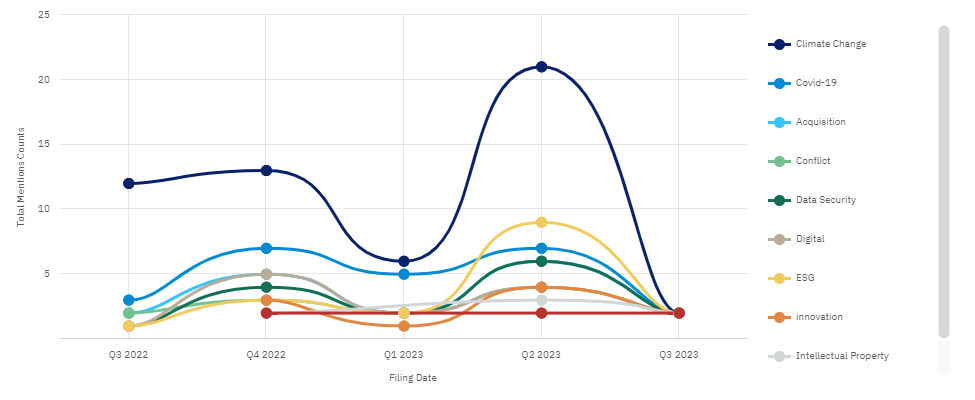
The climate crisis is arguably more notable than ever this summer with soaring temperatures being reported all over the globe and it’s putting the fashion industry’s contribution back into the spotlight.
According to the United Nations, this year July was on track to be the hottest month on record.
Gherzi Textil Organisation partner Robert P. Antoshak points out: “As the North Hemisphere swelters in August, we’re left knowing that our industry has the dubious honour of contributing to the planet’s climate crisis.”
He believes that over the past 40 years, our industry built an intricate global system of suppliers, contractors, and shippers, supported by a complex infrastructure of storage and logistical services – all to maximise just-in-time retail replenishment and consumer purchasing, which is the essence of fast fashion.
Increase in climate change focus for apparel companies
At last year’s COP27, Swedish fashion brand H&M Group signed multiple open letters alongside 50 other global companies to highlight the need to decarbonise economies and lay down laws that will tackle climate change in alignment with the Paris Agreement.
This focus aligns with the increase of the keyword “climate change” in apparel industry company filings in the third quarter of 2022 (1 July 2022 to 30 September 2022).

US Tariffs are shifting - will you react or anticipate?
Don’t let policy changes catch you off guard. Stay proactive with real-time data and expert analysis.
By GlobalDataAccording to GlobalData’s analytics for the time period of August 2022 to August 2023, mentions of “climate change” increased 21 times, followed by ESG increasing nine times and Covid increasing eight times.

How is the fashion industry fighting the climate crisis?
The fashion industry is making efforts to undo years and years of harm caused to the environment, and the massive carbon footprint it continues to leave behind.
A recent report by the United Nations Climate Change and CDP states the fashion industry has made progress on climate action but still has a long way to go. Signatories of the Fashion Industry Charter for Climate Action are making promising strides with 89% of companies publicly reporting on their progress.
In addition to this, national funding agency UK Research and Innovation (UKRI) is pumping £7m ($8.9m) to fund several sustainability research projects lined up in the fashion and textiles industry.
UKRI has partnered with industry experts and other stakeholders to build a bank of data and knowledge to support innovation that helps move the industry towards sustainable circular business models.
While the industry is looking at sustainable projects, Antoshak believes the bottom line of this climate crisis would probably mean an end to the age of inexpensive goods.
He continues: “For consumers long accustomed to dirt-cheap clothing, a day of reckoning may be around the corner. For fast fashion companies, you may have to get faster – or learn how to sell less but accept a mark-up.”
Our signals coverage is powered by GlobalData’s Thematic Engine, which tags millions of data items across six alternative datasets — patents, jobs, deals, company filings, social media mentions and news — to themes, sectors and companies. These signals enhance our predictive capabilities, helping us to identify the most disruptive threats across each of the sectors we cover and the companies best placed to succeed.



